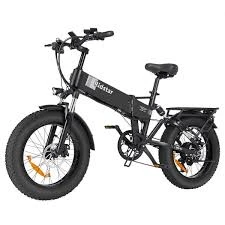
- Afrikaans
- Albanian
- Amharic
- Arabic
- Armenian
- Azerbaijani
- Basque
- Belarusian
- Bengali
- Bosnian
- Bulgarian
- Catalan
- Cebuano
- Corsican
- Croatian
- Czech
- Danish
- Dutch
- English
- Esperanto
- Estonian
- Finnish
- French
- Frisian
- Galician
- Georgian
- German
- Greek
- Gujarati
- Haitian Creole
- hausa
- hawaiian
- Hebrew
- Hindi
- Miao
- Hungarian
- Icelandic
- igbo
- Indonesian
- irish
- Italian
- Japanese
- Javanese
- Kannada
- kazakh
- Khmer
- Rwandese
- Korean
- Kurdish
- Kyrgyz
- Lao
- Latin
- Latvian
- Lithuanian
- Luxembourgish
- Macedonian
- Malgashi
- Malay
- Malayalam
- Maltese
- Maori
- Marathi
- Mongolian
- Myanmar
- Nepali
- Norwegian
- Norwegian
- Occitan
- Pashto
- Persian
- Polish
- Portuguese
- Punjabi
- Romanian
- Russian
- Samoan
- Scottish Gaelic
- Serbian
- Sesotho
- Shona
- Sindhi
- Sinhala
- Slovak
- Slovenian
- Somali
- Spanish
- Sundanese
- Swahili
- Swedish
- Tagalog
- Tajik
- Tamil
- Tatar
- Telugu
- Thai
- Turkish
- Turkmen
- Ukrainian
- Urdu
- Uighur
- Uzbek
- Vietnamese
- Welsh
- Bantu
- Yiddish
- Yoruba
- Zulu
Feb . 14, 2025 01:56 Back to list
down hill mountain bike
When navigating the exhilarating sport of downhill mountain biking, enthusiasts and professionals alike are constantly on the lookout for top-tier equipment that enhances performance, safety, and enjoyment of the ride. The search for the perfect downhill mountain bike is paramount, as it's not just about mastering the challenging terrains but also ensuring a seamless fusion of technology, design, and rider compatibility. This narrative delves into the intricate elements that define the ultimate downhill mountain bike experience, ensuring unmatched performance and reliability on every descent.
Wheelsets designed for downhill biking demand a balance between strength and weight. Wide rims paired with tubeless tires are favored for their ability to withstand impacts and provide traction on loose surfaces. Brands like Maxxis and Schwalbe have engineered tires specifically aimed at enhancing grip without compromising speed. The tread patterns and rubber compounds play a pivotal role in how the bike handles different surfaces, from gravel to mud. Finally, the aesthetics and ergonomic design of a downhill mountain bike can profoundly affect rider performance and enjoyment. Bikes that blend aerodynamic styling with tailored geometry allow riders to optimize their riding posture, a crucial factor in minimizing fatigue during intense rides. Adjustable seat posts and handlebars ensure the bike adapts to the rider's preference, not the other way around. Trustworthy brands with a track record of innovation and reliability continue to dominate the downhill mountain biking landscape. Manufacturers such as Trek, Specialized, and Santa Cruz are celebrated for their commitment to merging cutting-edge technology with robust testing processes to produce bikes that inspire confidence. Selecting the perfect downhill mountain bike is a journey rooted in personal preference, backed by meticulous research and expert advice. Riders seeking to enhance their downhill experience must consider every component, from materials and design to brand reputation. By prioritizing these aspects, enthusiasts can ensure that every ride is not only thrilling but also safe and rewarding, reinforcing their trust in the sport’s advancements and their equipment's dependability.


Wheelsets designed for downhill biking demand a balance between strength and weight. Wide rims paired with tubeless tires are favored for their ability to withstand impacts and provide traction on loose surfaces. Brands like Maxxis and Schwalbe have engineered tires specifically aimed at enhancing grip without compromising speed. The tread patterns and rubber compounds play a pivotal role in how the bike handles different surfaces, from gravel to mud. Finally, the aesthetics and ergonomic design of a downhill mountain bike can profoundly affect rider performance and enjoyment. Bikes that blend aerodynamic styling with tailored geometry allow riders to optimize their riding posture, a crucial factor in minimizing fatigue during intense rides. Adjustable seat posts and handlebars ensure the bike adapts to the rider's preference, not the other way around. Trustworthy brands with a track record of innovation and reliability continue to dominate the downhill mountain biking landscape. Manufacturers such as Trek, Specialized, and Santa Cruz are celebrated for their commitment to merging cutting-edge technology with robust testing processes to produce bikes that inspire confidence. Selecting the perfect downhill mountain bike is a journey rooted in personal preference, backed by meticulous research and expert advice. Riders seeking to enhance their downhill experience must consider every component, from materials and design to brand reputation. By prioritizing these aspects, enthusiasts can ensure that every ride is not only thrilling but also safe and rewarding, reinforcing their trust in the sport’s advancements and their equipment's dependability.
Latest news
-
The Ultimate Kids' Four-Wheeler Experience
NewsJul.09,2025
-
The Ultimate Guide to Mountain Bikes: Gear Up for Your Ride
NewsJul.09,2025
-
The New Age of Cycling: Electric Bikes for Every Rider
NewsJul.09,2025
-
The Best Kids Bicycles: Ride in Style and Safety
NewsJul.09,2025
-
The Best 3-Wheel Scooters for Kids: Fun, Safety, and Adventure
NewsJul.09,2025
-
Revolutionize Your Ride: Affordable Electric Bikes
NewsJul.09,2025
-
Finding the Perfect Mountain Bike for Every Rider
NewsJul.09,2025



